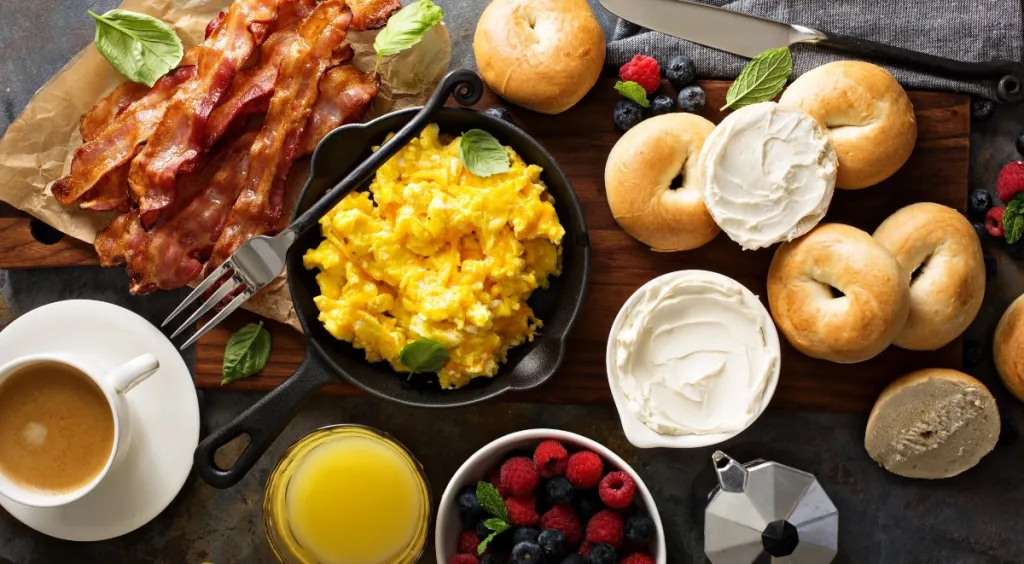
Introduction
GLP-1, or glucagon-like peptide-1, is an important hormone in our bodies. It helps manage our blood sugar levels and appetite. When our bodies produce more GLP-1, it can help with weight loss and controlling diabetes. But did you know that certain foods can naturally stimulate GLP-1 production? In this article, we’ll explore various foods that can help boost your GLP-1 levels and improve your overall health. Including these foods in your diet can be a tasty and effective way to support your body’s natural processes.
Fiber-Rich Foods
Fiber is a type of carbohydrate that our bodies can’t digest. However, it plays a crucial role in stimulating GLP-1 production. When we eat fiber-rich foods, they move slowly through our digestive system. This slow movement helps increase the production of GLP-1. Foods high in fiber include fruits, vegetables, whole grains, and legumes. For example, apples, carrots, brown rice, and lentils are all great sources of fiber. Adding these foods to your daily meals can help boost your GLP-1 levels naturally.
Protein-Rich Foods
Protein is another important nutrient that can help increase GLP-1 production. When we eat foods rich in protein, our bodies produce more GLP-1, which helps regulate our appetite and blood sugar levels. Some excellent sources of protein include lean meats, fish, eggs, dairy products, beans, and nuts. For example, chicken, salmon, eggs, Greek yogurt, black beans, and almonds are all protein-packed options. Including a variety of protein-rich foods in your diet can help keep your GLP-1 levels high.
Healthy Fats
Healthy fats, such as those found in avocados, nuts, seeds, and olive oil, can also help stimulate GLP-1 production. These fats are essential for our bodies and can help improve our overall health. For example, avocados are rich in monounsaturated fats, which are good for our hearts and can help increase GLP-1 levels. Nuts and seeds, such as walnuts and chia seeds, are also great sources of healthy fats. Using olive oil in your cooking and salads is another way to add healthy fats to your diet. By including these foods, you can support your body’s GLP-1 production and enjoy their health benefits.
Fermented Foods
Fermented foods are another group of foods that can help boost GLP-1 levels. These foods contain probiotics, which are beneficial bacteria that support our digestive health. Fermented foods include yogurt, kefir, sauerkraut, kimchi, and miso. For example, yogurt and kefir are dairy products that contain live cultures of probiotics. Sauerkraut and kimchi are fermented vegetables, while miso is a fermented soybean paste. Adding these foods to your diet can help improve your gut health and increase GLP-1 production.
Low-Glycemic Index Foods
Foods with a low glycemic index (GI) are digested and absorbed more slowly, leading to a gradual increase in blood sugar levels. These foods can help stimulate GLP-1 production and improve blood sugar control. Low-GI foods include whole grains, legumes, vegetables, and some fruits. For example, barley, lentils, broccoli, and apples all have a low GI. Eating these foods can help keep your blood sugar levels stable and boost GLP-1 production.
Conclusion
Incorporating foods that stimulate GLP-1 into your diet can have numerous health benefits. Fiber-rich foods, protein-rich foods, healthy fats, fermented foods, and low-glycemic index foods can all help increase your body’s GLP-1 production. By making these foods a regular part of your meals, you can support your body’s natural processes, improve your blood sugar control, and aid in weight loss. Remember to include a variety of these foods in your diet for the best results. And if you’re looking for an additional boost in your weight loss journey, consider trying this weight loss product.
FAQs
1. What is GLP-1 and why is it important?
GLP-1 is a hormone that helps regulate blood sugar levels and appetite. It is important because it can aid in weight loss and improve blood sugar control, which is beneficial for managing diabetes.
2. How do fiber-rich foods stimulate GLP-1 production?
Fiber-rich foods move slowly through the digestive system, which helps increase the production of GLP-1. This slow movement supports better blood sugar control and appetite regulation.
3. Can protein-rich foods help increase GLP-1 levels?
Yes, eating protein-rich foods can help increase GLP-1 levels. Protein helps regulate appetite and blood sugar levels, making it an important nutrient for GLP-1 boosting production.
4. What are some examples of healthy fats that can stimulate GLP-1?
Healthy fats that can stimulate GLP-1 include avocados, nuts, seeds, and olive oil. These fats are essential for our bodies and can help improve overall health.
5. Why are fermented foods good for GLP-1 production?
Fermented foods contain probiotics, which are beneficial bacteria that support digestive health. These probiotics can help increase GLP-1 production and improve gut health.